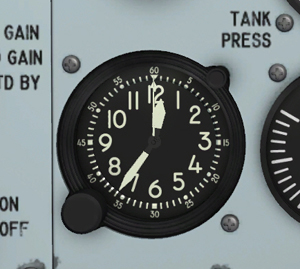
Aircraft clock and stopwatch on the main panel.
A typical A-13A aircraft clock and stopwatch [46, fig. 5-1] is installed on the main panel. The A-13A is a small mechanical clock which runs for about a week on a single winding. The two large pointers (hands) are the clock's hour and minute indicators. The two small pointers are the stopwatch's minute and second indicators.
On the real aircraft, the large button in the bottom left corner is used to wind and set the clock. In the simulator, this button is used to set the clock only. Hours are set by left or right-clicking the button with the mouse. Minutes are set with the mouse wheel.
To use the stopwatch, press (click) the small button in the top right corner to start. Press the button again to stop. Press a third time to reset the stopwatch to zero.
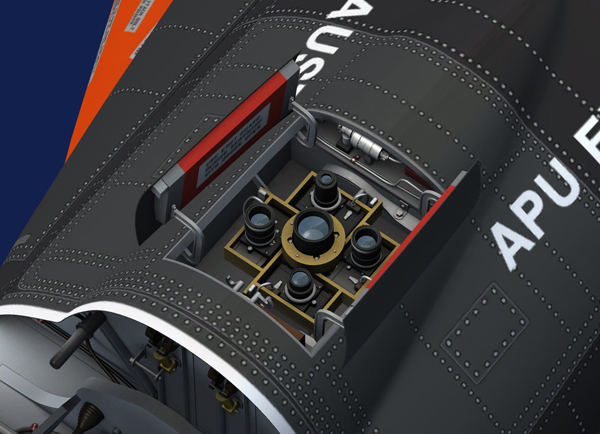
Skylight hatch.
The X-15A-2 has a skylight hatch on top of the instrument compartment that gives the instrumentation equipment access to the outside environment. The X-15A-2 skylight hatch consists of two hydraulically-activated 20 by 8½-inch doors. The instrument compartment on the X-15A-2 addon carries an ultraviolet "star tracker" and an ultraviolet horizon scanner that allow for stellar photography experiments. A switch [19, fig. 5-3] on the center pedestal is used to open or close the hatch. An amber caution light [73. fig. 5-1], on the instrument panel, when illuminated, indicates that the hatch is open. For more information, refer to "Instrumentation System Controls and Indicators".
Note: The skylight hatch is hydraulically activated. It needs hydraulic power to open or close.
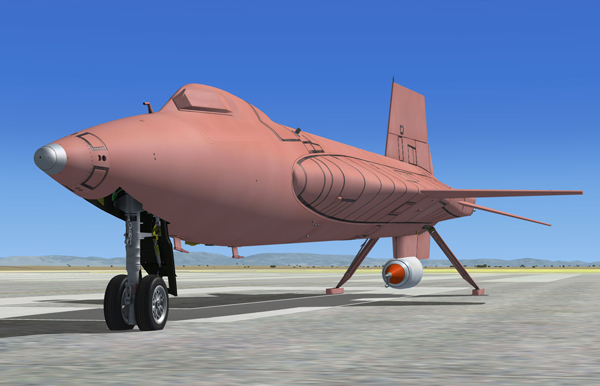
MA-25S pink ablator.
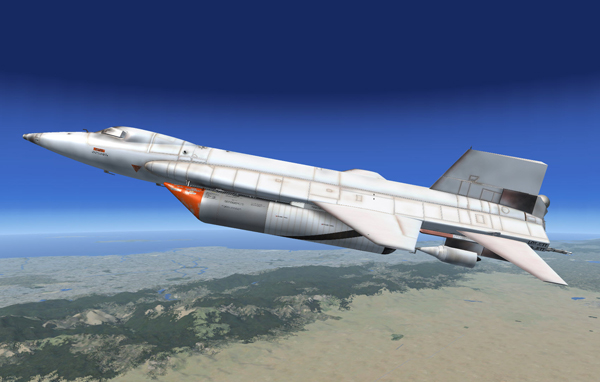
DC90-090 white sealer over the pink ablator.
Hypersonic flight generates tremendous amount of heat and a special ablative coating is used to protect the exterior of the X-15A-2 aircraft during special missions. It consisted of the basic Martin MA-25S pink ablator (that was used on the space shuttle external tank) sealed with the Dow Corning DC90-090 white protective wear layer.
An “eyelid” was designed to protect the left canopy window from being smeared with ablator residue during high speed flight.
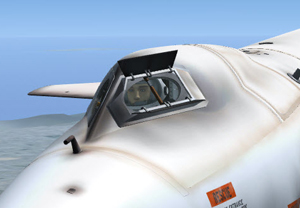
Protective eyelid.
An external "eyelid" [37, fig. 3-1] is provided on selected X-15A-2 aircraft to protect the left elliptical canopy window from being smeared with ablator residue during high speed flight. The eyelid is closed before the acceleration phase and re-opened before landing. A special handle [6, fig. 4-3], in the cockpit, is used to open or close the eyelid.
Note: If you forgot to close the eyelid before a high speed flight, you can right-click the eyelid handle to clean ablator splatters from the windows.
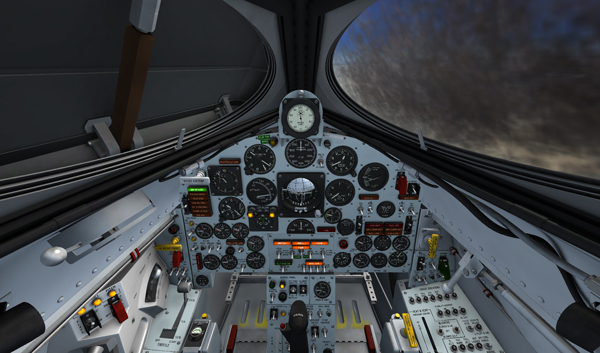
Ablator splatters on the right (unprotected) window.
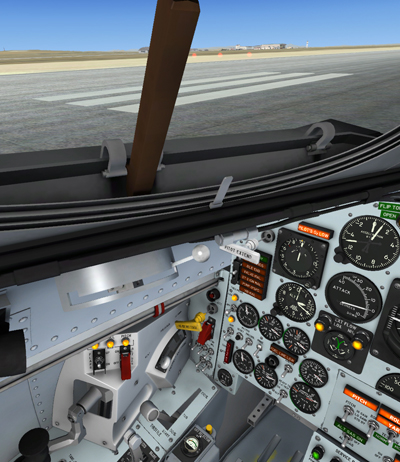
Eyelid handle below the left elliptical window (open position).
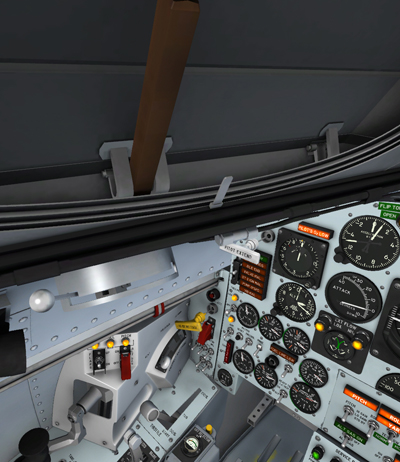
Eyelid handle below the left elliptical window (close position).
The handle [6, fig. 4-3], below the left window on the left side of the canopy (on selected X-15A-2 aircraft), is mechanically-linked to the external eyelid on the left elliptical canopy window. Pushing the handle to its forward position opens the external eyelid. Pulling the handle to its aft position closes the external eyelid.
Note: If you forgot to close the eyelid before a high speed flight, you can right-click the eyelid handle to clean ablator splatters from the windows.